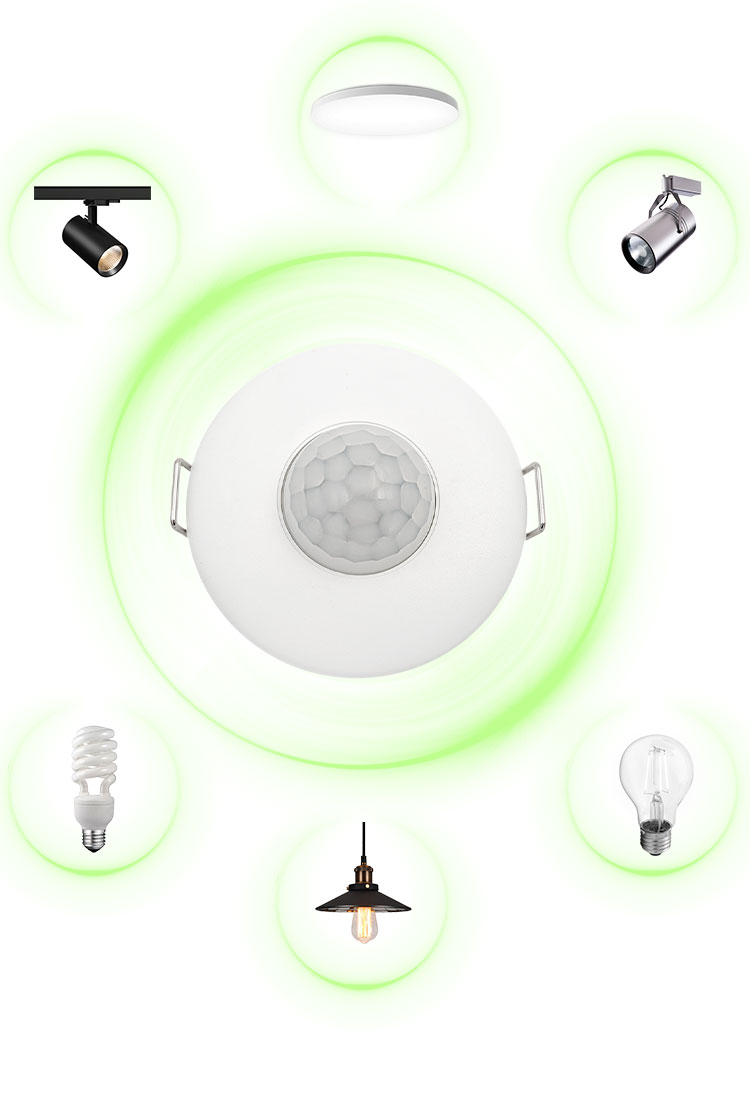

Guidelines for using human infrared sensors (PIR sensor)
Guidelines for using human infrared sensors (PIR sensor)
The human infrared sensor (PIR sensor) mainly uses human infrared energy as a control signal source and is widely used in intelligent security, lighting control, home and other fields. Attention should be paid to the following matters when using:
1. Set up and test PIR sensor first:
Debugging and sensitivity settings: Sensitivity adjustment: Adjust sensitivity based on detection distance and human body size (adult/child) to avoid accidental triggering by pets or small animals.
Delay setting: Reasonably set the signal delay after triggering (such as lighting control setting for 10 seconds to 1 minute) to avoid frequent switching.
Coverage area adjustment: Adjust the detection angle (usually 110 °~180 °) through a lens or rotating sensor to avoid invalid areas.
Test steps: Connect, install and fix the light fixture==Power on==The light fixture lights up (warm up for about 30-45 seconds) and people should not move or be on site==Until the light goes out==Then the person enters the sensing range, the light will light up again==When the person does not move, the light will go out==At this point, the sensor is normal==Finally, adjust to the required "Environmental Mode" and "Time Mode" to complete the test.
2. Installation PIR sensor precautions:
Due to the sensors detecting changes in brightness and temperature in the surrounding environment, it may sometimes cause misoperation or inactivity
Do not approach plants or curtains that sway due to the wind;
Do not approach the air supply outlet of air conditioning or other ventilation systems;
Do not install in easily movable places;
Do not face the road where cars pass by;
Avoid radio waves and stay away from strong electromagnetic interference sources such as motors/transformers;
Avoid locations that strongly reflect sunlight from marble floors or walls;
Avoid areas close to glass partition walls;
Avoid extreme high or low temperature environments (beyond the nominal working temperature of the sensor);
Install the height according to product specifications, ensuring that the tilt angle covers the target area
3. Some problem and solved way:
The load do not work:
Please check if the connection-wiring of power is correct.
Please check if the load is good.
Please check if the working light sets correspond to ambient light.
The sensitivity is poor:
Please check if there has hindered in front of the detection window to effect to receive the signal.
Please check if the ambient temperature is too high.
Please check if the induction signal source is in the detection fields.
Please check if the installation height corresponds to the height showed in the instruction.
Please check if the moving orientation is correct.
The sensor can not shut off the load automatically:
Please check if there is continual signal in the detection field.
Please check if the time delay is the longest.
Please check if the power corresponds to the instruction.
4. PIR sensor Daily Maintenance:
Regularly clean the lens using a soft cloth to avoid dust and spider webs affecting light transmission.
Check the power source: Replace batteries regularly for battery-operated models; inspect wiring for aging issues for wired connections.
Avoid physical damage: Prevent impacts or violent disassembly, especially of the Fresnel lens part.
Proper use and maintenance of infrared human sensors PIR sensor can significantly enhance their reliability and lifespan. For complex issues, refer to the product manual or contact manufacturer support.








